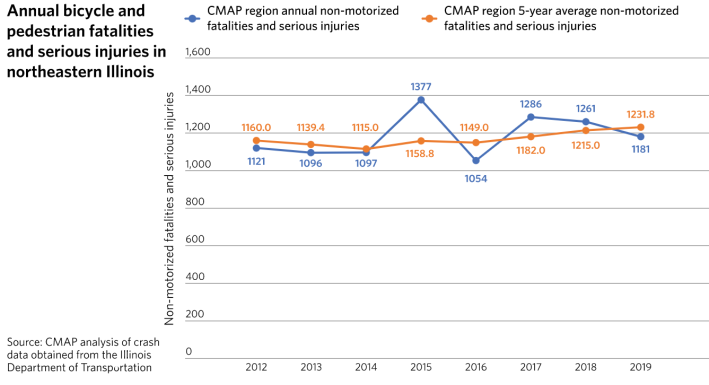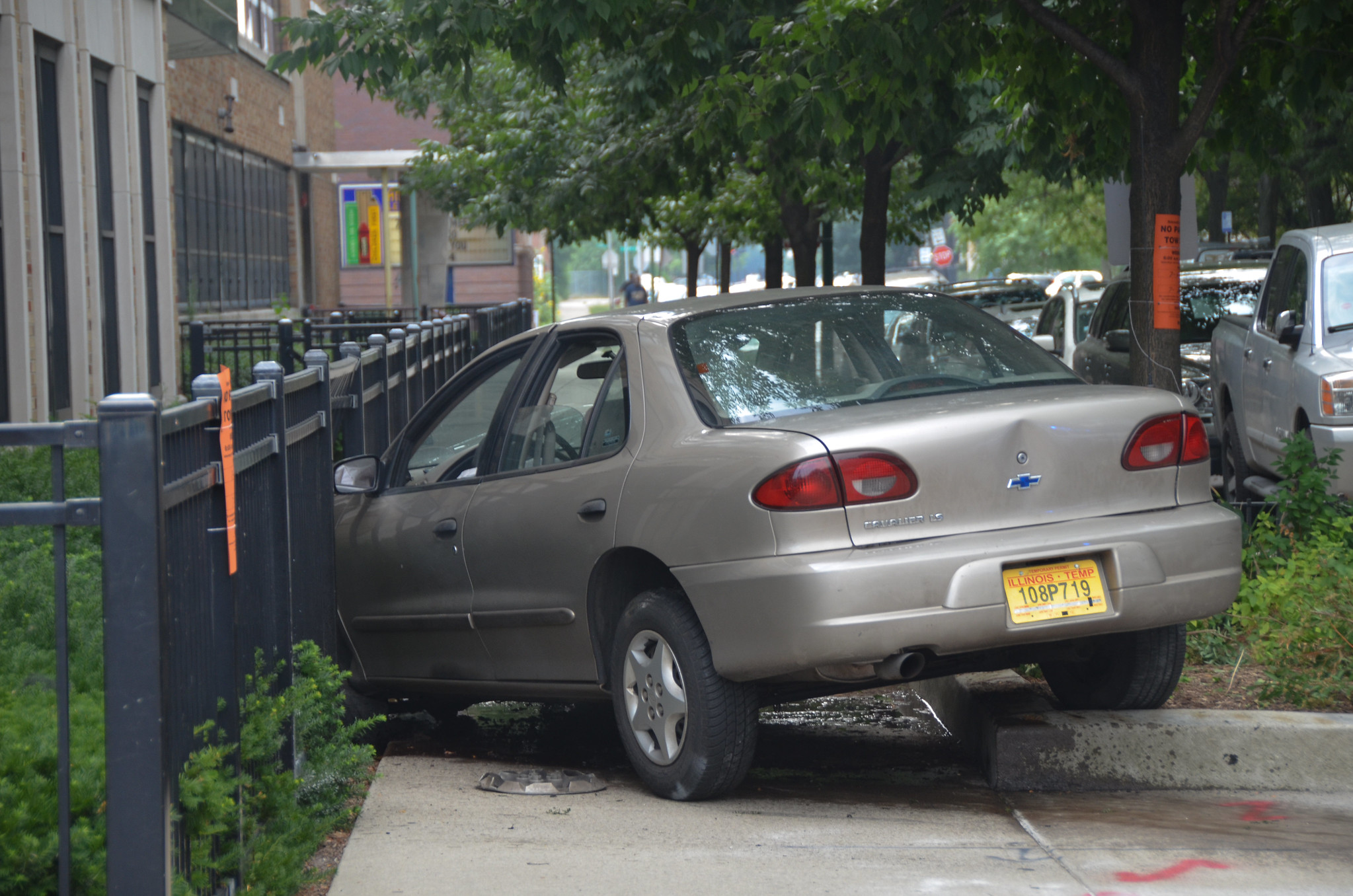According to the National Highway Traffic Safety Administration, 2020 saw the highest traffic fatality rate relative to the number of miles driven in the modern era, in spite of a significant drop in traffic volumes in the second quarter of 2020. Here in Chicago, there were 98 on-street traffic deaths from April through November of 2020, up 44 percent from 68 fatalities during the same period in 2019, according to the Chicago Department of Transportation. The pandemic has resulted in more serious crashes due to less congestion encouraging more people to drive at unsafe speeds.
But well before COVID-19 traffic deaths had been increasing across the Chicago region. The Chicago Metropolitan Agency for Planning recently analyzed crash data from the Illinois Department of Transportation which shows an increase in traffic fatalities during the 2010s. According to CMAP, the five-year average of traffic deaths on Chicagoland roads has trended upward in recent years, increasing from an average of 401 fatalities in 2014 to 471 fatalities in 2019. In 2017 there were 506 fatalities, the highest of all the years between 2010 and 2019. The share of people killed while walking and biking is also increasing.

The state of Illinois and the Chicago region are federally mandated to reduce traffic fatalities and injuries, but they are not meeting their targets. Chicagoland's safety performance targets are set by CMAP in coordination with IDOT. In response to the troubling upward trend in traffic fatalities in Northeastern Illinois, CMAP is creating a Regional Traffic Safety Agenda in collaboration with their partners and the communities in which they work. According to CMAP, the Regional Traffic Safety Agenda will address speed management, pedestrian and bicyclist safety, and other factors that can improve safety for all roadway users.
Traditionally traffic safety strategies have been classified under "the four Es": engineering, education, enforcement, and emergency services. However, there have been calls to address equity, climate change, technology, and public health as we look to post-pandemic travel concerns and a post-pandemic recovery. CMAP believes a transportation system in Northeastern Illinois that works for everyone must address systemic disinvestment in infrastructure, as well as equitable enforcement of traffic laws. Through the Regional Traffic Safety Agenda, CMAP plans to convene experts, conduct research and analysis, and develop data-driven policies and solutions.

It’s unfortunate that action on reducing traffic fatalities is moving at such a slow pace on a national, state, and city level. If the state and city were truly serious about driving down traffic fatalities, they would deploy a number of speed cameras based on crash data the city and state already has. The political hurdles that currently prevent this would be erased overnight if we truly believed that preventing serious injuries and deaths from vehicular crashes was important. We don’t need police officers involved in enforcing speed limits given the potential for racially biased and sometimes deadly enforcement by officers.
Road design is also important, and while the new designs are being developed and built, speed cameras can bridge the gap and have an immediate effect on driver behavior. Chicago has made some rapid response changes to high crash corridors, but often the fixes are not all that robust. It’s going to take more than paint and plastic posts to bring down the number of serious injuries and fatalities. Streetsblog Chicago will keep an eye out for CMAP’s Regional Traffic Safety Agenda and keep you updated on its progress as details become available.





